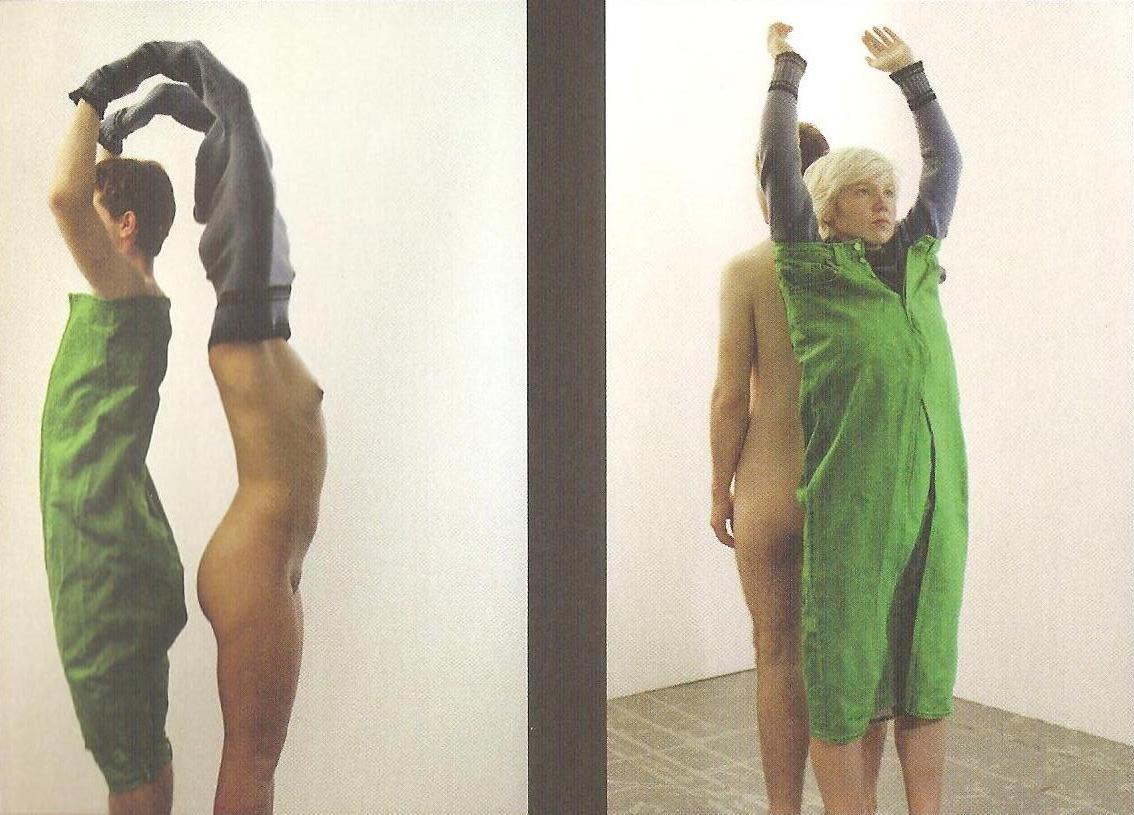dekonstruktivisme:Anna-Nicole Ziesche, States of Mind and Dress, 2002. The fashion film States of Mi
dekonstruktivisme:Anna-Nicole Ziesche, States of Mind and Dress, 2002. The fashion film States of Mind and Dress (2002) by Anna-Nicole Ziesche (b. 1972, Hamburg, Germany) opens with a shot of a naked man and woman standing with their backs to each other and with their arms in the air. A blue, hand-knitted sweater gradually grows on the body of the man and a green pair of jeans on the body of the woman. As soon as both garments are finished they glide back and forth from the one body to the other via the raised arms and over the heads of the man and woman. An exchange of garments between two bodies is thus created.Ziesche’s aim with this film is to show that you can have just as intimate and complex a relationship with someone else’s clothes as with the other person him- or herself. States of Mind and Dress is an example of Ziesche’s later work, which focuses on the ambivalent relationship an individual has with his or her body and clothing. The film addresses how an individual’s personality can be expressed by means of the clothes one uses to dress one’s body.Ziesche trained as a fashion designer at Central Saint Martins College of Art and Design in London. In her final year, however, she decided that she did not want to design actual clothing but devote herself to fashion photography and to making fashion films, installations and performances in order to express her ideas about contemporary fashion. The clothing that Ziesche designs only functions, then, within her performances and films. This conceptual approach, which she herself calls ‘fashion practice’, is a new way of creating a visual context for fashion. Ziesche’s work thus occupies a place between fashion and visual art.Underlying all her work is the concept of endless repetition. Ziesche is fascinated by the countless repetitive movements and routines of everyday life. In her early work she investigated repeating patterns, forms, colours and details in the production process of clothing; her later work concentrates on repetition in the rituals that represent the relationship between body and clothing, such as the daily act of getting dressed and undressed. -- source link
Tumblr Blog : dekonstruktivisme.tumblr.com
